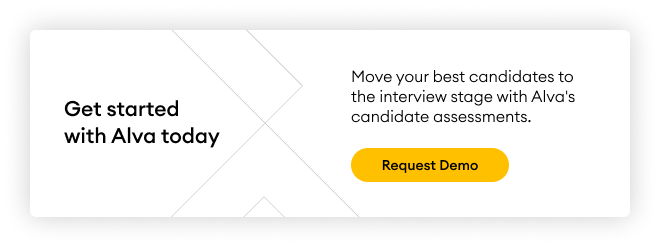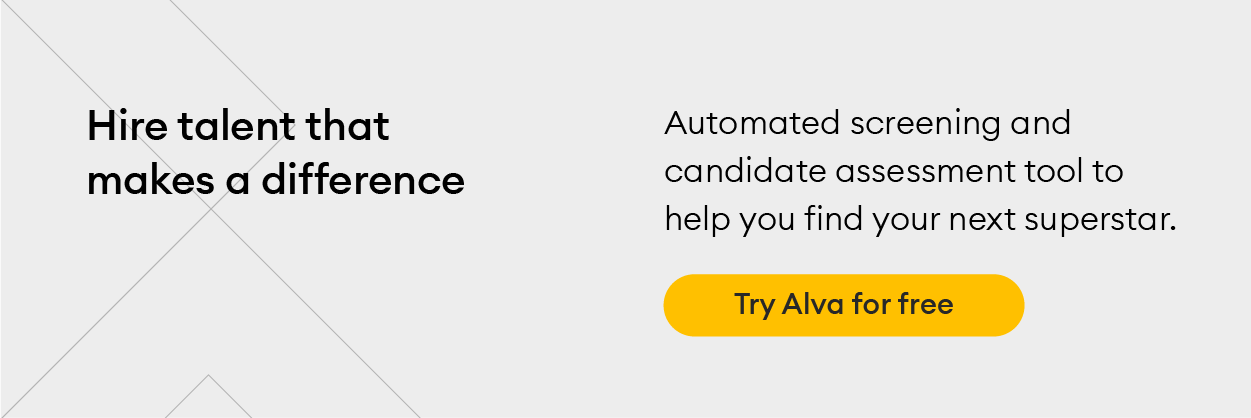64% of recruiters admit they don’t have access to the right digital tools to make their work lives easier. What’s more, a bad tech stack can make it difficult to succeed against competitors—which includes everything from product development, customer engagement, and sales to innovation.
More crucially, outdated, confusing technology can impact your team’s ability to attract and retain top talent, which harms your financial bottom line. So how can you make your recruitment automation tech stack work?
Top considerations for choosing a great recruitment tech stack
There’s no one-size-fits-all formula when choosing your dream tech stack. Whatever option you go for, it’s customisable to your company’s unique needs. However, there are a few common rules to consider when assessing available options on the market:
1. Does the tool have built-in data analytics and reporting?
Look for tech stacks that offer built-in data analytics and reporting capabilities. Why? These tools can generate powerful insights on key data like time-to-fill, cost-per-hire, and candidate conversion rates. By monitoring these metrics, you can quickly identify bottlenecks, adjust course, and optimise your hiring process so it runs like a well-oiled machine.
2. Can workflows be automated?
Make sure that your tech stack hooks up with your other HR systems. Whether that’s an onboarding platform, payroll system, or Human Resource Information System, integrating and automating your processes enables data to flow across all your systems, turning your HR ecosystem into one centralised hub.
3. Does the tool work for mobile users?
Opt for tools that are uncomplicated, frictionless to use, and mobile-friendly. Maybe your tool even has a dedicated mobile app. At the end of the day, what you want is to make your hiring managers' and recruiters' lives easier. Whether they are accessing candidate profiles, reviewing applications, or managing hiring tasks on the go, look for tools they can use with minimal effort or time as they do their day-to-day tasks.
4. Is there vendor support and training?
Consider the level of support and training provided by tech stack vendors. If the tool is particularly complicated to get used to, having a customer care team on hand to onboard, train, and provide ongoing customer support ensures you are adopting the technology correctly and are making the best use of it for maximum impact.
What tools should talent acquisition teams include in their tech stack? Four must-haves
Below, we cover four must-haves when considering your tech stack.
1. Applicant Tracking Systems
Use an Application Tracking System (ATS ) to nurture your talent funnel, reduce leaks in your candidate pipeline, and improve the candidate experience. Look for an ATS provider that offers advanced features like automated candidate ranking, workflow management, and automated email flows so your candidates receive seamless updates and feedback on their application.
2. Candidate screening & assessment tool
If you're still asking candidates to have certain years of experience, ask yourself why. Experts on personality psychology in recruitment, Schmidt and Hunter, found that looking at past experience is as predictive of future success as assessing someone's handwriting (spoiler alert: it's unhelpful).
In other words, screening candidates via CVs and cover letters is the lowest predictor of job performance, so why waste time doing this when you could be making more informed, data-driven hiring decisions?
Instead, invest in HR software that allows you to understand which candidates will be right today and how you evolve as an organisation. Moreover, ensure that any pre-employment assessment tool you use doesn't automate bias. For example, by using an ATS bot, you could still be screening out the 30% of women and 50% of People of Colour who struggle to get a first interview.
Instead, consider using a psychometric testing tool that evaluates candidate skills, knowledge, and aptitude. When these assessments are grounded in science, they can help filter candidates based on objective criteria and provide hiring managers with data-driven insights to make informed recruiting decisions quickly.
Alva’s candidate assessment platform does just that– it helps TA teams assess the competencies, personality traits, and logical ability that matter to the job. As a bonus, hiring managers can compare candidate scores in a single view and decide which candidates to interview at a click of a button.
3. Interview tool
According to leading research, the job interview is the most widely accepted and used selection method by recruiters and candidates and plays a central role in hiring decisions.
However, its predictive power depends on doing it right, which involves structuring the process to overcome the limitations of unstructured interviews.
Consider using an interview tool that will help you automate the interviewing process and identify candidates most likely to perform well on the job. Alva’s interview templates help companies of all maturity levels and sizes to conduct structured interviews, minimise the risk of making biased decisions, and align with stakeholders and hiring managers across the organisation about which candidates to progress with.
4. Onboarding tool
Employees usually decide whether they feel welcome in a new organisation within the first month. That’s why it’s imperative to offer a great employee onboarding experience.
With an onboarding tool, you can create standardised onboarding workflows for all new hires. That means every employee who enters your organisation goes through the same experience, receiving the necessary information and training materials to hit the ground running. With the right onboarding tool, you can track how your new employees perform and adjust to company life, enabling you to adapt your onboarding plan accordingly.
How to create a recruitment tech stack for your talent acquisition team
Run an internal assessment
Conduct an audit of your existing processes and technology to determine what’s working and what’s not. For instance, if your hiring managers are spending too much time scanning CVs for suitable candidates and not enough time interviewing top talent, then it might be time to consider a candidate assessment tool that enables them to move quickly with quality candidates and spend more time vetting them lower in the recruitment funnel. Moreover, look over your current ATS, recruitment software, and other tools being used, and collect feedback from users on whether these tools are helping their day-to-day workflow.
Compare recruitment software tools on the market
There are numerous recruitment software tools out there- but the important thing is to select the right one for your organisation and particular pain point. For example: are your hiring managers continuously conducting interviews based on subjective criteria, which translates to poor quality of hires? You will need to look for solutions tailored specifically toward conducting objective, efficient interviews.
Evaluate recruitment tech stack vendors
Create a shortlist of recruitment tech stack vendors that align with your requirements. Visit their websites, review product information, and explore their case studies or success stories. Look for vendors with a strong reputation, positive customer reviews, and a track record of delivering results.
Sign up for a free trial and try out the product
Free trials enable you to get a feel for the tool and see whether it’s right for your organisation. You can test the solutions within your environment, collect feedback from your team, and assess whether the tool does what it says it does. During the pilot phase, keep an eye on key metrics like candidate quality, time-to-hire and candidate experience to determine how well the tool is performing for your needs.
Optimise your recruiting tech stack continuously
Continue to monitor the impact of the tech stack on your hiring process and make adjustments if needed. A good way to do this is to track performance metrics to see whether the implemented tech stack is working or not. Also, assess the ROI and how it aligns with your evolving needs as an organisation.
Transform your talent acquisition with Alva Labs
Never make a bad hire again with Alva’s- three-in-one candidate assessment platform.
Say goodbye to CVs, screen candidates using science, and move quality candidates along to the interview step, all at the click of a button. The best part is: you’re saving time and resources.







